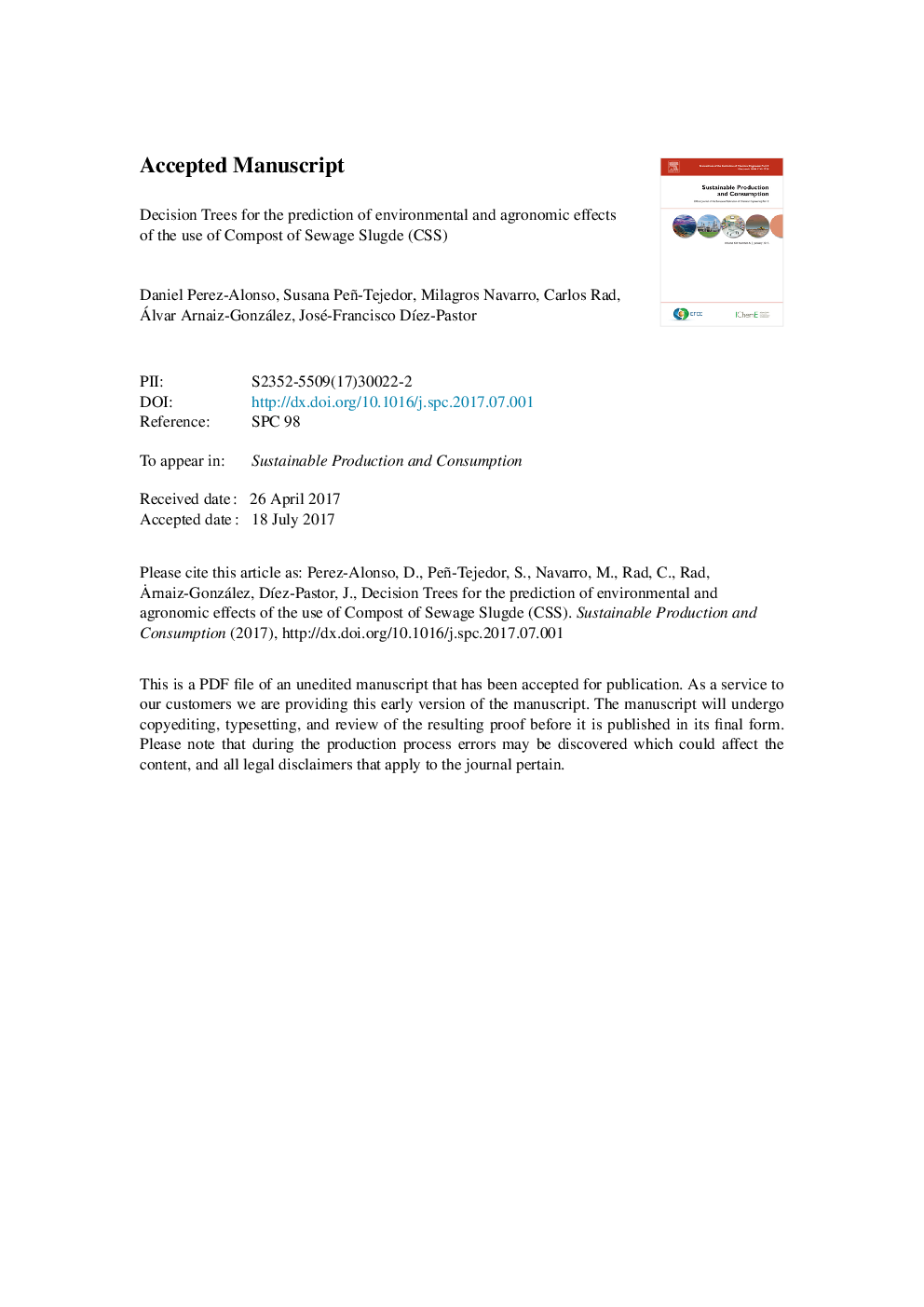| Article ID | Journal | Published Year | Pages | File Type |
|---|---|---|---|---|
| 4999490 | Sustainable Production and Consumption | 2017 | 42 Pages |
Abstract
Data mining allows the creation of predictive models and in addition, some techniques, such as Decision trees, allow the generation of fast and interpretable models. The dataset used in this study come from an experimental field located in Burgos (Central-Northern Spain), in which, additions of Compost of Sewage Sludge (CSS) have been applied alternatively for 6 years. The main consequence of this application in terms of nutrients is the increase in available phosphorus mainly with the addition of the highest doses of CSS. There have been found correlations between the heavy metal contents in soil and in plant tissues described by Decision trees that are refuted by numerous publications using other classical statistical methodologies. Decision trees make it easy to interpret predictions, opening a new path for interpreting complex datasets commonly present in mid- or long-term agronomic experiences.
Related Topics
Physical Sciences and Engineering
Chemical Engineering
Process Chemistry and Technology
Authors
Daniel Perez-Alonso, Susana Peña-Tejedor, Milagros Navarro, Carlos Rad, Álvar Arnaiz-González, José-Francisco DÃez-Pastor,
